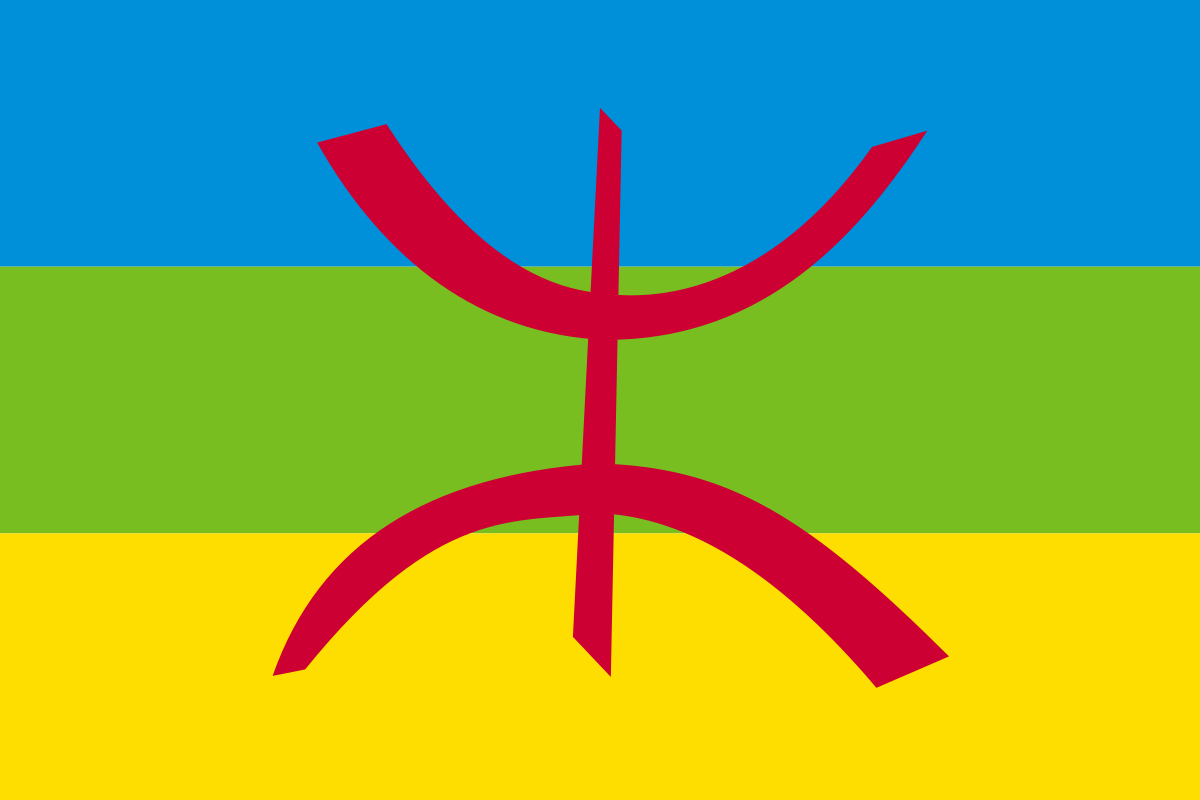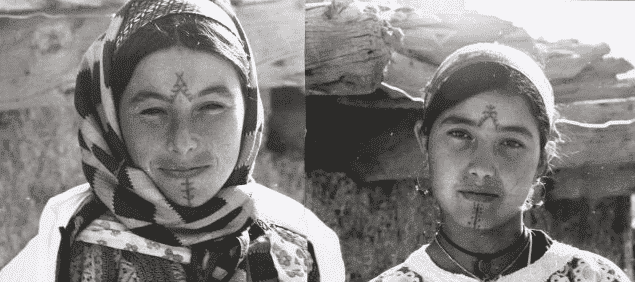Tattoo and Henna
By Audrey Chan
 |
| Amazigh Village outside of Marrakech |
Origins of Body Marking in Morocco
 |
| Amazigh Flag |
Body marking in Morocco is an ancient tradition that has been practiced since pre-Islamic times. The indigenous Amazigh of Morocco originally started marking their bodies in the form of tattoos. These tattoos distinguished tribal members and expressed familial ties.
With changing political, religious, and social environments, tattooing was stigmatized and henna rose in popularity. Henna has now completely replaced tattoo in Moroccan body marking culture and is used in both ritual and regular festivities.
Tattoo and Henna Meanings
 |
| Amazigh Woman |
As henna was seen as a sort of symbolic, but impermanent replacement for tattooing, both have similar symbolic meanings. Both have a primary purpose of beautification of women and expression of female sexuality. However, they are also associated with fertility and serve as a ward against evil spirits.
Common Tattoo and Henna Designs
 | |||
| Common Amazigh Tattoo Designs |
 |
| Common Henna Designs |
Stigmatization of Tattoos
 |
| Amazigh Women |
The current consensus on tattoos in Morocco is they are generally frowned upon. This stigmatization began in the early 1900s when the French occupied Morocco and would abduct local Amazigh women and use them as prostitutes in their brothels. Since many of the women had tattoos, many colonizers began to associate the tattoos with prostitution.
Later in the 1970s, the Iranian Revolution brought the widespread adoption of Salafi Islam that was interpreted to prohibit tattoos. Tattoos were seen as permanent alterations to God's creation, which is a sin. It is also said that permanent tattoos prevents the skin from being purified in the practice of ablution.
Perceived Benefits of Henna over Tattoo
 |
| Application of Henna |
Source: McCabe, Carolina. “The Disappearing Tradition of Amazigh Facial and Body Tattoos.” Morocco World News, April 7, 2019. https://www.moroccoworldnews.com/2019/04/269903/tradition-amazigh-facial-tattoos/.


This article was very informative, and your format made it an easy read!
ReplyDeleteI didn't know much about henna, but thanks to your article, I've grown an appreciation. It's a wonderful expression of art that stems from a culture that gives it great meaning and purpose.
Awesome post! It's terrible that the tattoos were seen as a sign of prostitution by colonizers.
ReplyDeleteThe addition of photos per section of the article were really helpful for visualization.
Awesome job! This had a lot of information about this. It is very interesting to know that back in the day it was okay for women to tattoo their faces, because even here in America it is not what women do usually. I am glad that they use henna tattoos now because they can be so beautiful if done well.
ReplyDelete